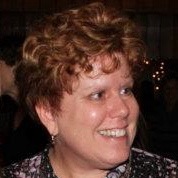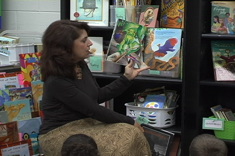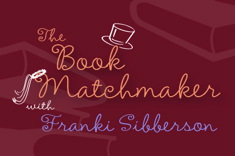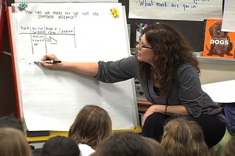Room 14 is buzzing with excitement. Cole and Kai are sharing bicycle stories that their fathers told them. Kai's dad wanted a bike so badly when he was in first grade that he dug one out of the dumpster. It was missing a handle bar and a pedal, but that didn't matter. He was going to master the bike, which he did, until he skidded down a hill out of control! Cole's dad told him about riding his two-wheeler in his driveway when his brother (Cole's uncle) put a stick in the spokes, causing his dad to tumble over the handle bars. The boys were amazed at the similarities of stories that took place on two different continents over 20 years ago.
At the computer, Alan is sitting with Melissa, a guest researcher in my classroom, translating a video of his father's story of early Christmases in Mexico. Alan explains that his father, along with the other children, would put cards on the Christmas tree with their wishes. A few days later "St. Nicholas" would come to the church, bringing gifts amid the colorful lights and chorus of Christmas songs.
Orazia sits with me as we transfer her grandma's video story of early life in Italy. She and her grandma have a lot in common, especially their love of horses. Orazia is amazed at her grandma's tale of getting thrown off her pet horse when she was a little girl, and being left in the field as the horse galloped away. Luckily, her siblings realized something was amiss when the horse arrived back at the barn without its rider. They hurried to the field to carry their sister back home, where she could have her sprained ankle tended.
Connecting Families and the Curriculum
What you are witnessing is our Family History Inquiry Project in action. Our first-grade curriculum calls for comparing the past and present. I wanted my students to do more than compare their lives to abstract figures from the past. I wanted them to make personal connections and be engaged in the process of finding out what life really was like in the past, as well as find similarities to their own lives. Because I had a guest researcher in my room that year, students were accustomed to investigating questions and engaging in thought-provoking discussions about their results. Melissa and I knew that incorporating technology would not only hook my students, but allow them to participate more fully in the research process.
iPod Nanos and mini-camcorders allowed students to ask questions, analyze their grandparent's stories, and report their findings without being bogged down by their limited writing abilities. For my English language learners, the use of technology permitted them to gather stories in their families' native language. Each student was on equal footing with a piece of technology in his or her hands.

Due to grant funding, we had two iPod Nanos and three RCA Small Wonder mini-camcorders to put into student hands. We knew that using technology, allowing students to ask their own questions, and involving parents and grandparents would be vital to keeping students engaged in this project. What child doesn't love hearing stories from the "olden days" and having uninterrupted time with important adults in their lives?
Beginning with the end in mind, I looked at the social studies state standards, asking myself what I wanted my students to understand at the end of our project. These key understandings were:
1. People all over the world, past and present have the same needs.
2. We can compare family life in the past to family life in the present.
3. We can gather information by using primary sources (photographs, interviews, written documents, etc.).
4. Family stories keep our history alive.
We also knew that our inquiry would be grounded in family stories. We searched for books that would support our discussions about types of stories families tell, and would also help the students generate a list of interview questions. Because approximately 1/3 of my class were English language learners, it was essential to us that the books represent families from diverse backgrounds. We found the following books were excellent examples on which to build our foundation. We charted our thinking about each book.
The Keeping Quilt by Patricia Polacco: We can tell stories about things that have been handed down from generation to generation.
White Socks Only by Evelyn Coleman: We can tell stories about important events that happened "back in the day."
Thunder Cake by Patricia Polacco: We can tell stories about being scared.
My Abuelita by Tony Johnston: We can tell stories about our jobs.
I Love Saturdays y Domingos by Alma Flor Ada: We can tell stories about our cultural heritage.
Family Pictures, Cuadros de Familia by Carmen Lomas Garza: We can tell stories about holidays and family traditions. We can tell stories about cooking with our family.
My Rotten Redheaded Older Brother by Patricia Polacco: We can tell stories about our brothers and sisters.
Each of these texts was integral to supporting our learning. The students generated a long list of interview questions based on these stories. Some of the interview questions and statements included:
Tell a story about your brothers and sisters. Did you argue? What kinds of games did you play?
Tell a story about the first time you did something, like ride a bike.
Tell a story about how things are different now than they were back then.
Tell a story about any pets you had.
Tell a story about holidays at your house.
Tell a story about cooking with another adult in your family.
What kinds of jobs did you have when you were younger?
Did you move when you were little? Tell a story about that.
Was there ever a time you were scared? Tell a story about that.
What was school like when you were younger? Tell a story about that.
As we read the books and created our list of questions, my eager researchers were coming to school daily with new stories from home related to the books we were reading. It was evident that they were enthusiastic about the project. The excitement continued to mount as "camera day" loomed closer.
Integrating Technology in the Project
In order for this project to be successful, the students needed to know how to use the equipment independently. We had two different types of video recording devices. The iPod Nano and the RCA Small Wonder Mini-Camcorders both have the ability to capture video. We showed a few parent volunteers how to use the equipment so that they could instruct the students in small groups.
We invited a guest speaker to share his family's story of immigrating to the United States from Mexico when he was a young boy. Using the list of questions the students previously generated, I modeled the interview process and recorded his responses on the RCA Small Wonder. He regaled us with stories of playing soccer, going to school in Florida, and waiting for his siblings to join them in the United States as his parents worked to save money. His stories brought up more questions from the students.
We then put the students in small groups with an adult volunteer to learn how to use either the mini-camcorder or iPod. Students learned how to turn the cameras on and off, how to digitally record video, and how to change batteries. They took turns doing "practice" interviews with each other and watching their videos. Interview questions in hand (in both English and Spanish) along with a letter explaining the project, the students were ready to take the cameras home. We rotated through the cameras in about two week's time. Each day, I downloaded the videos onto the computer and saved them for our future iMovie.
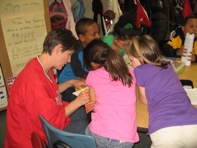
What wonderful stories we gathered! Grandparents and parents fondly recalled times from their pasts as they shared stories about getting into trouble with their siblings, first bikes, visiting a grandmother in Puerto Rico, and gathering around the one black and white television in the house. Several families shared their stories in their native Spanish tongue, giving my students the opportunity to translate for Melissa and me.
The rewards from this project were far greater than I ever imagined. All students became historical researchers as they moved away from looking at history through a historian's eye, and looked at it through their own eyes. Additionally, history came alive as students were able to investigate questions that were meaningful to them. Our community of inquiry became even larger, including extended family members all working toward the same goal.


